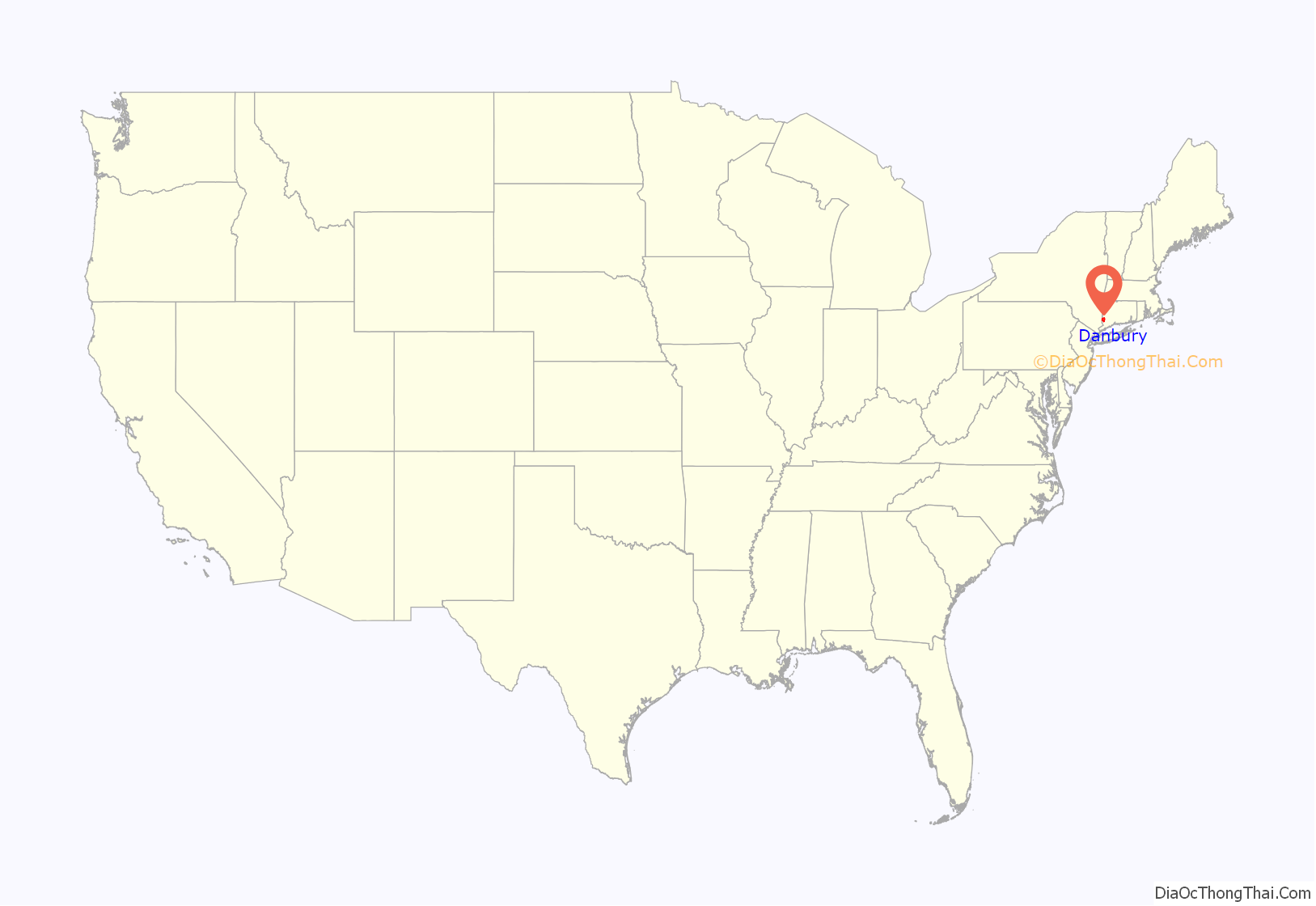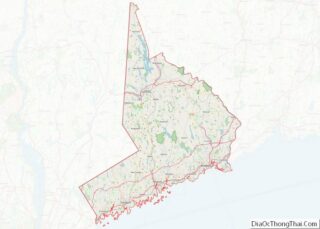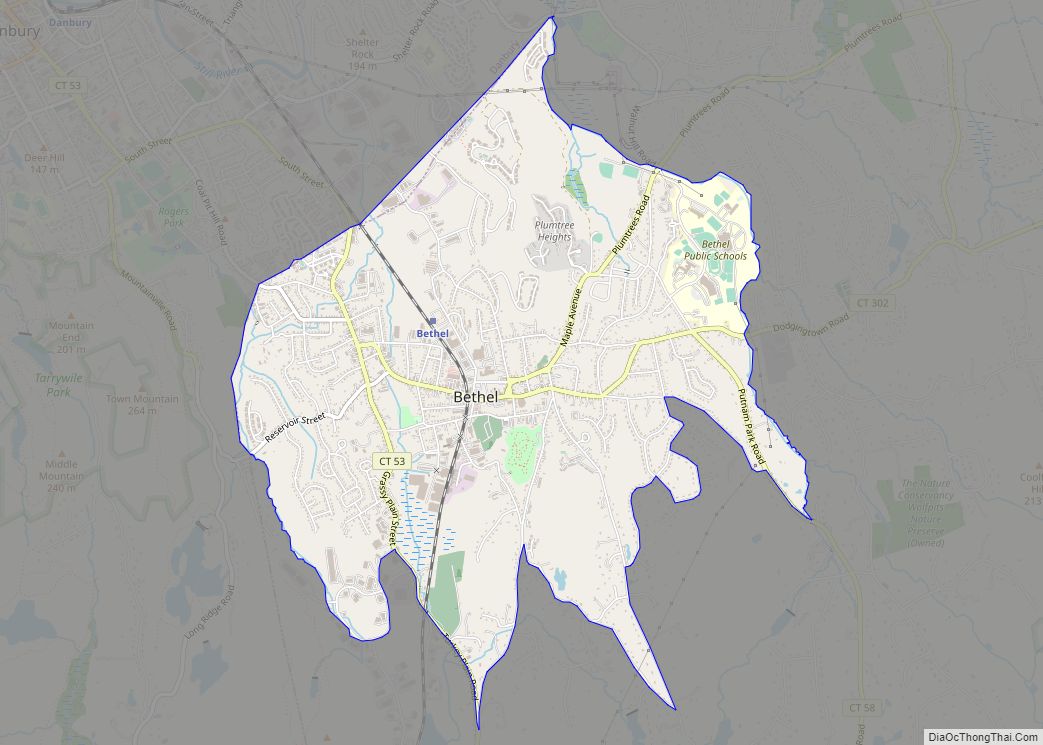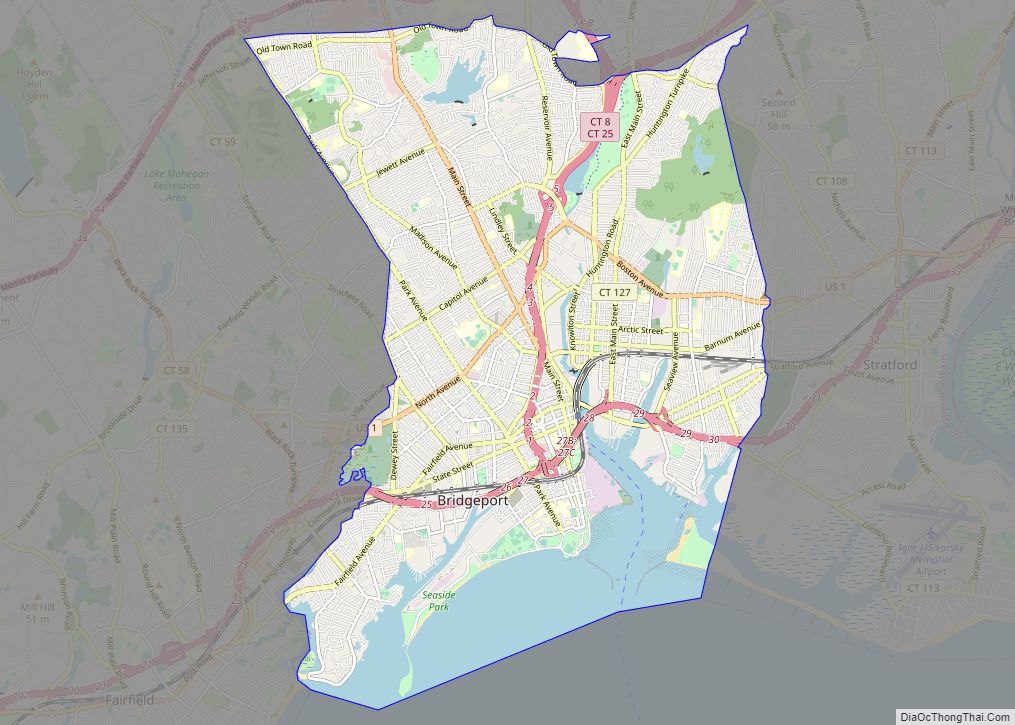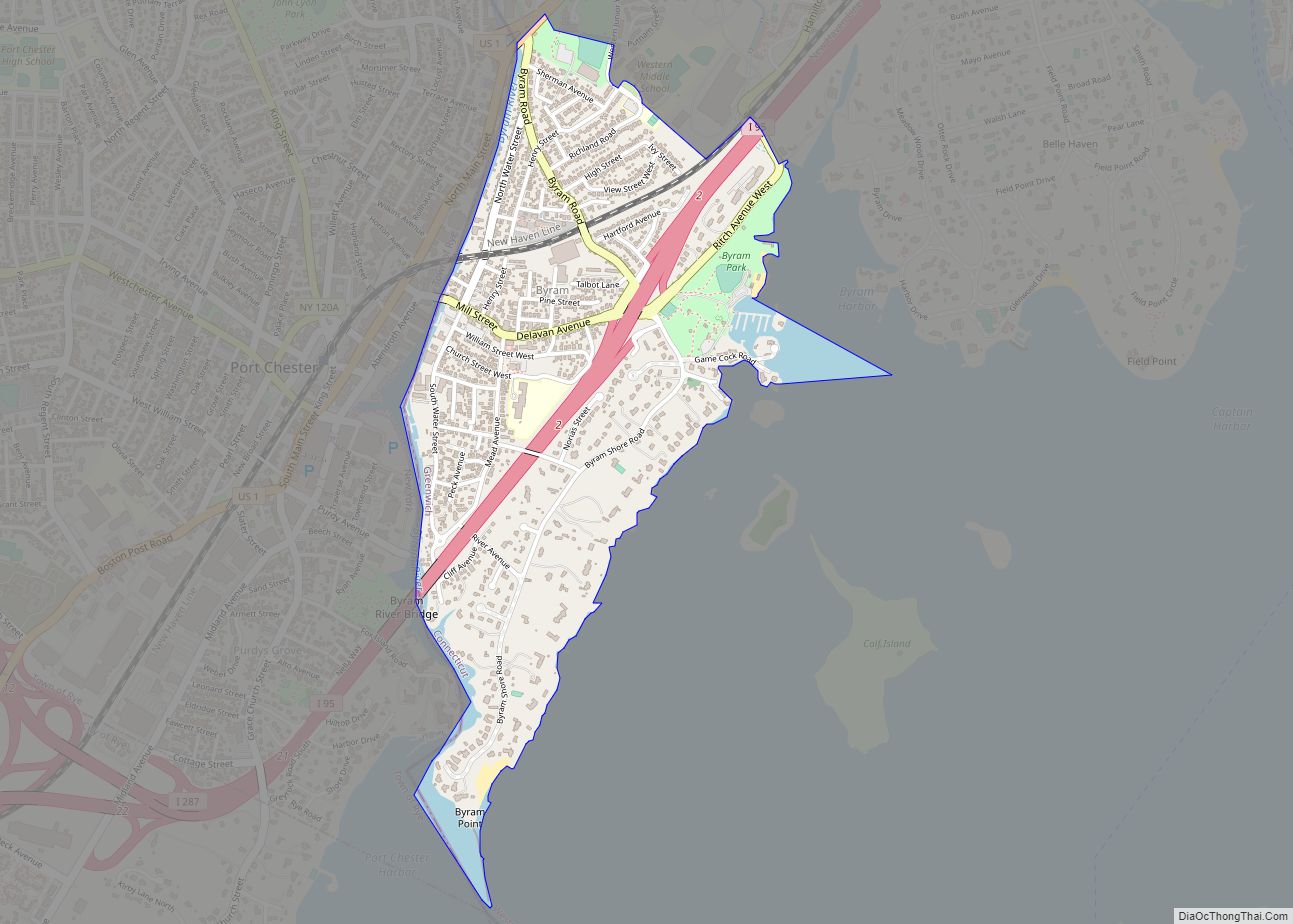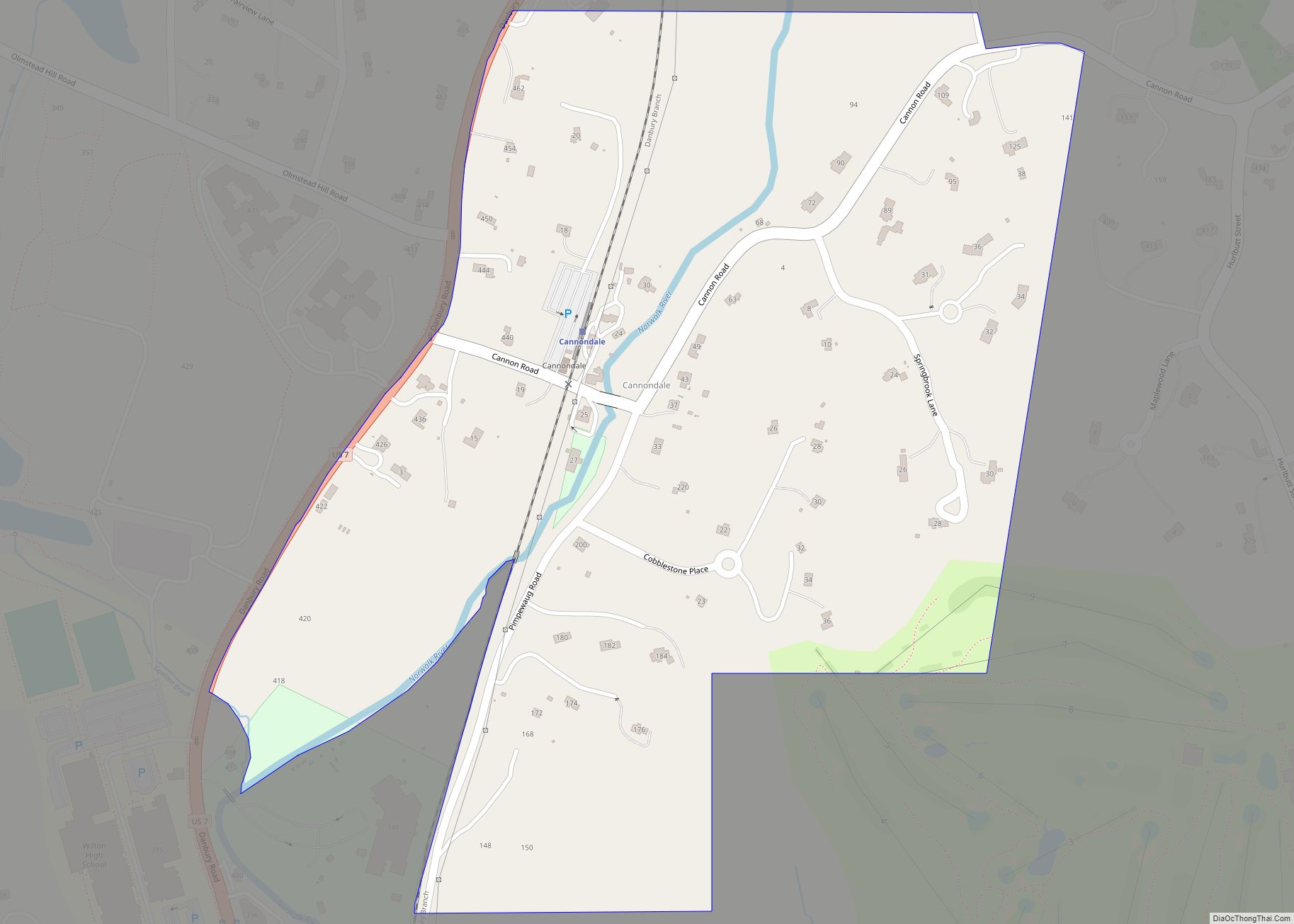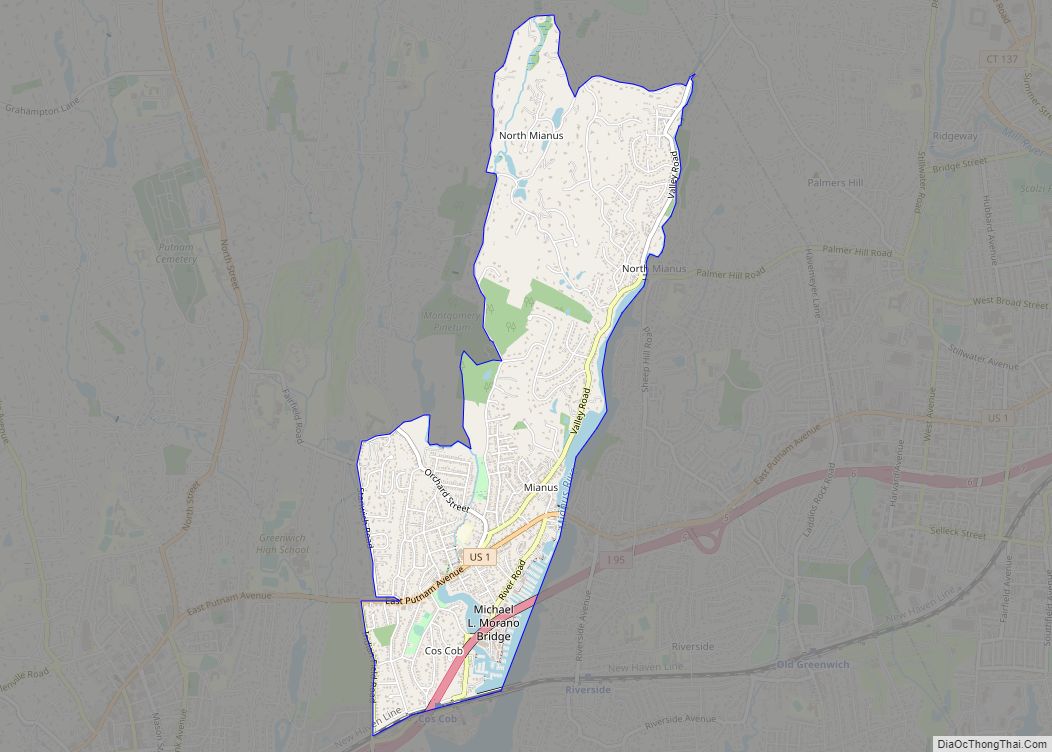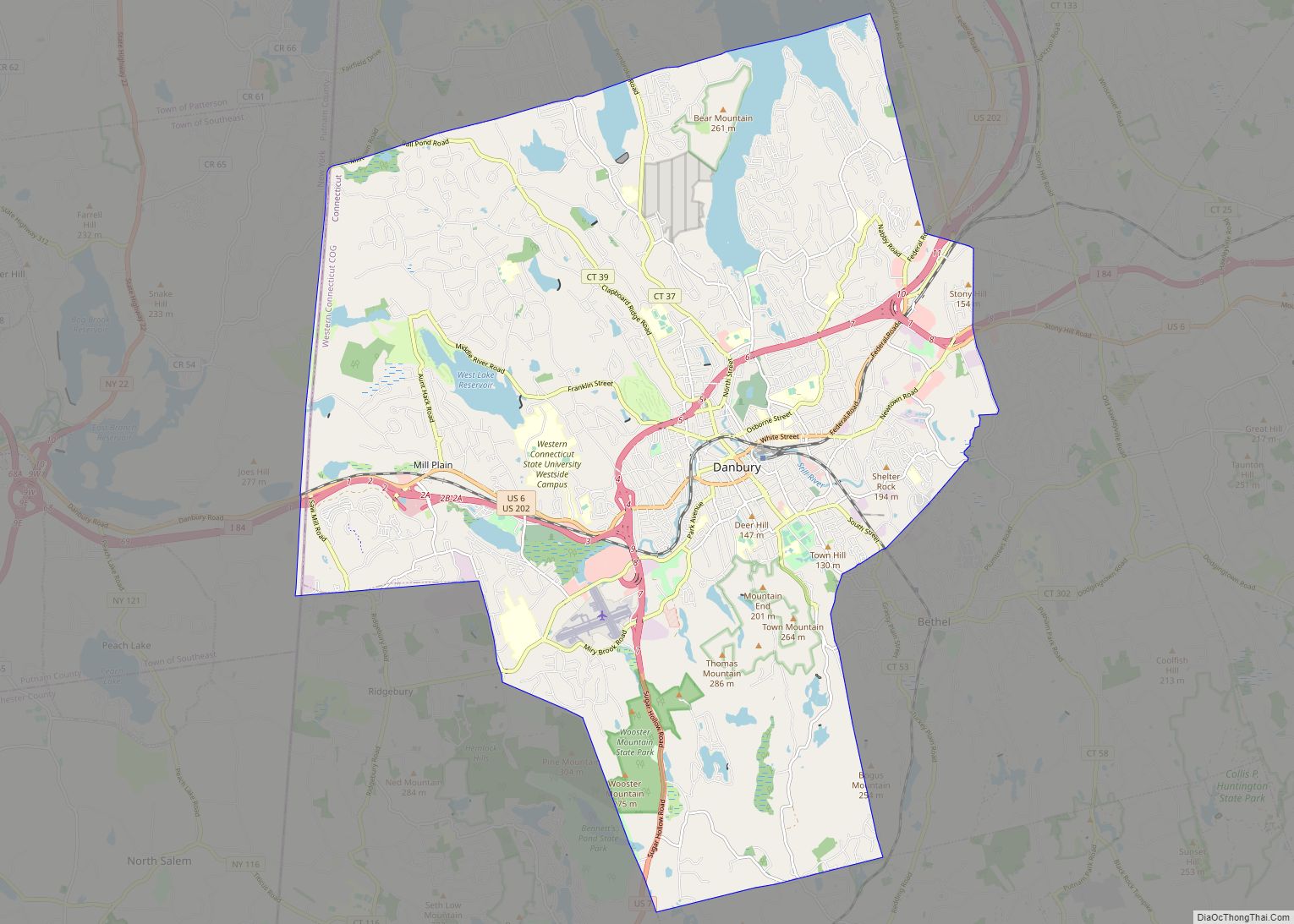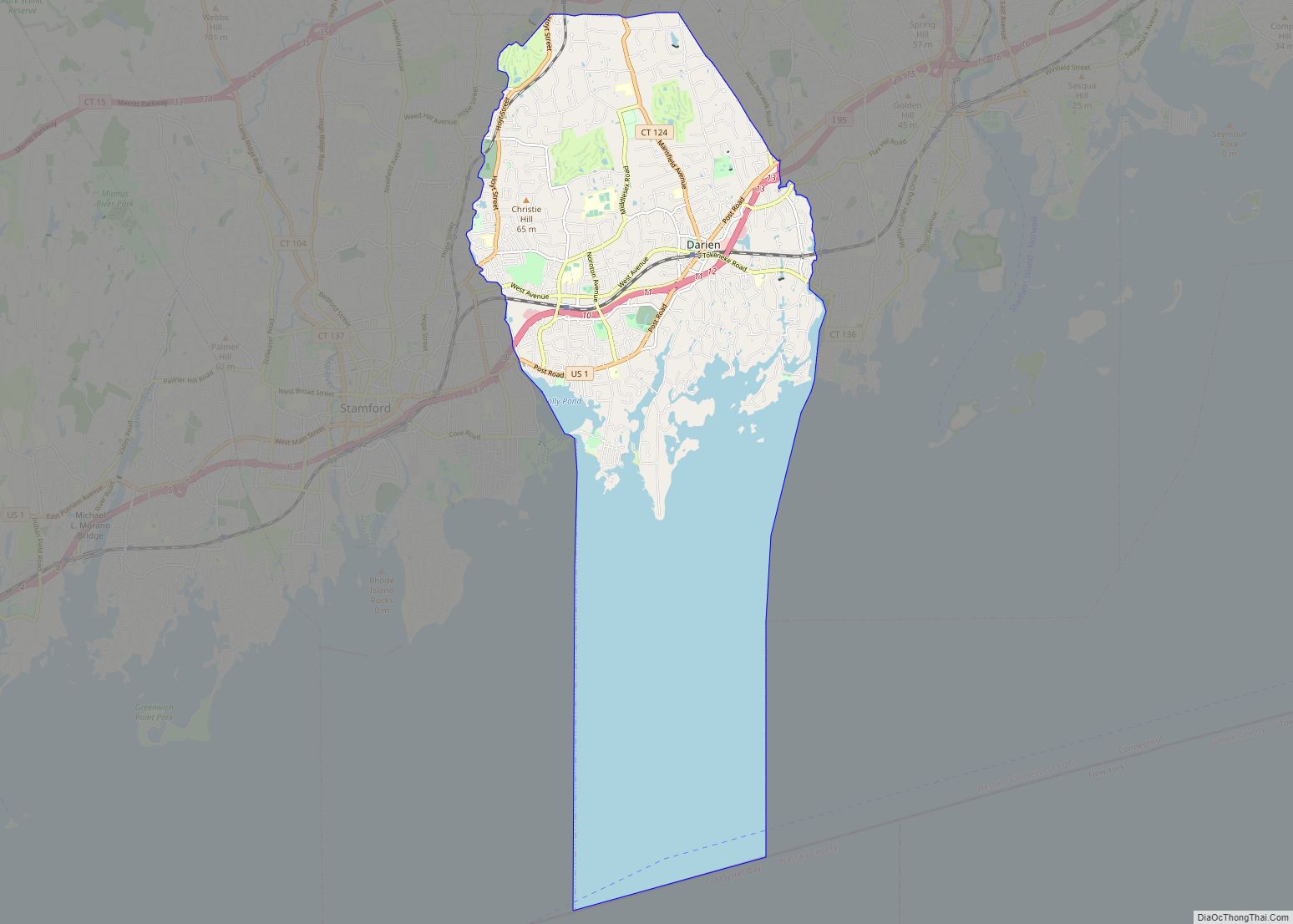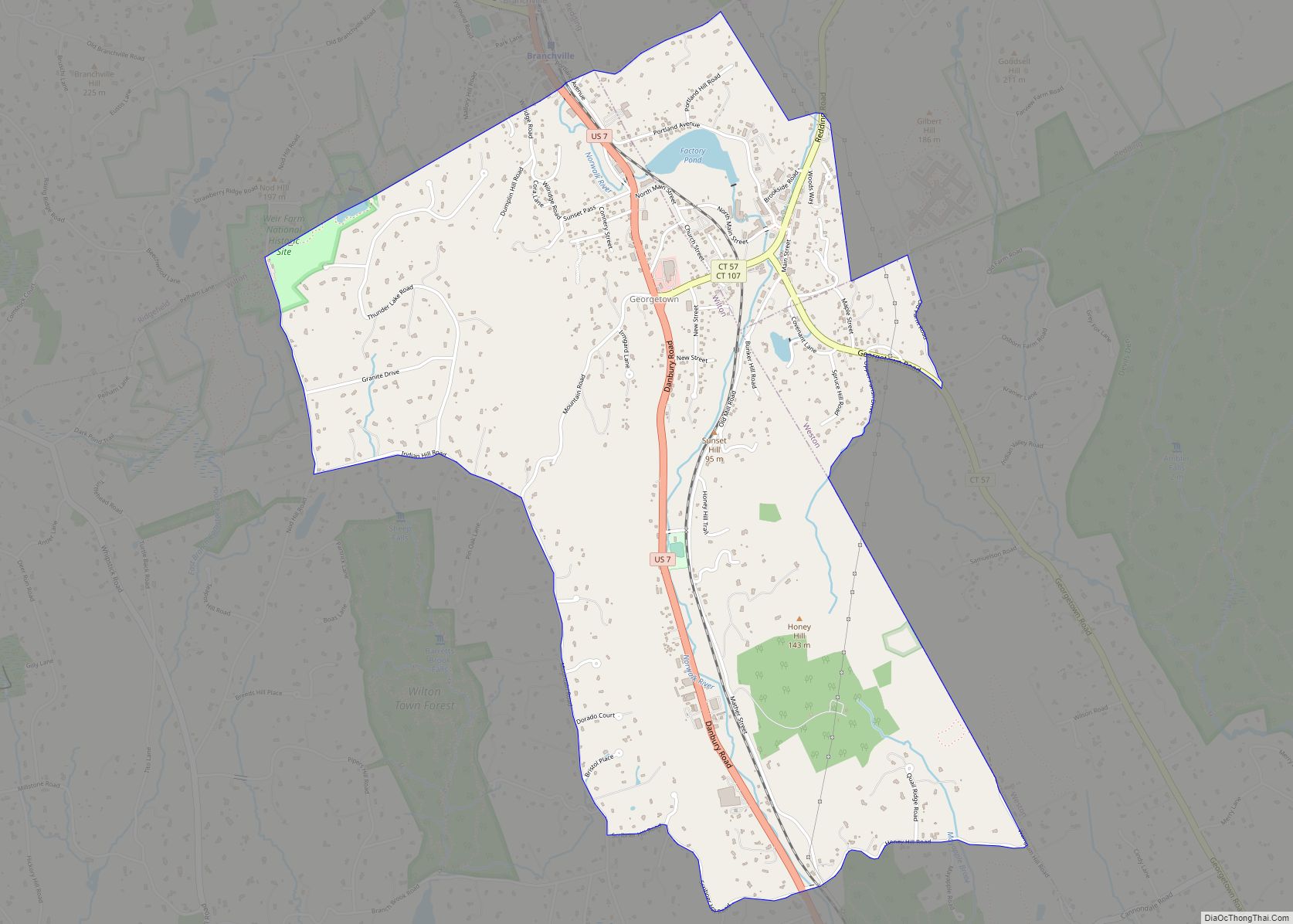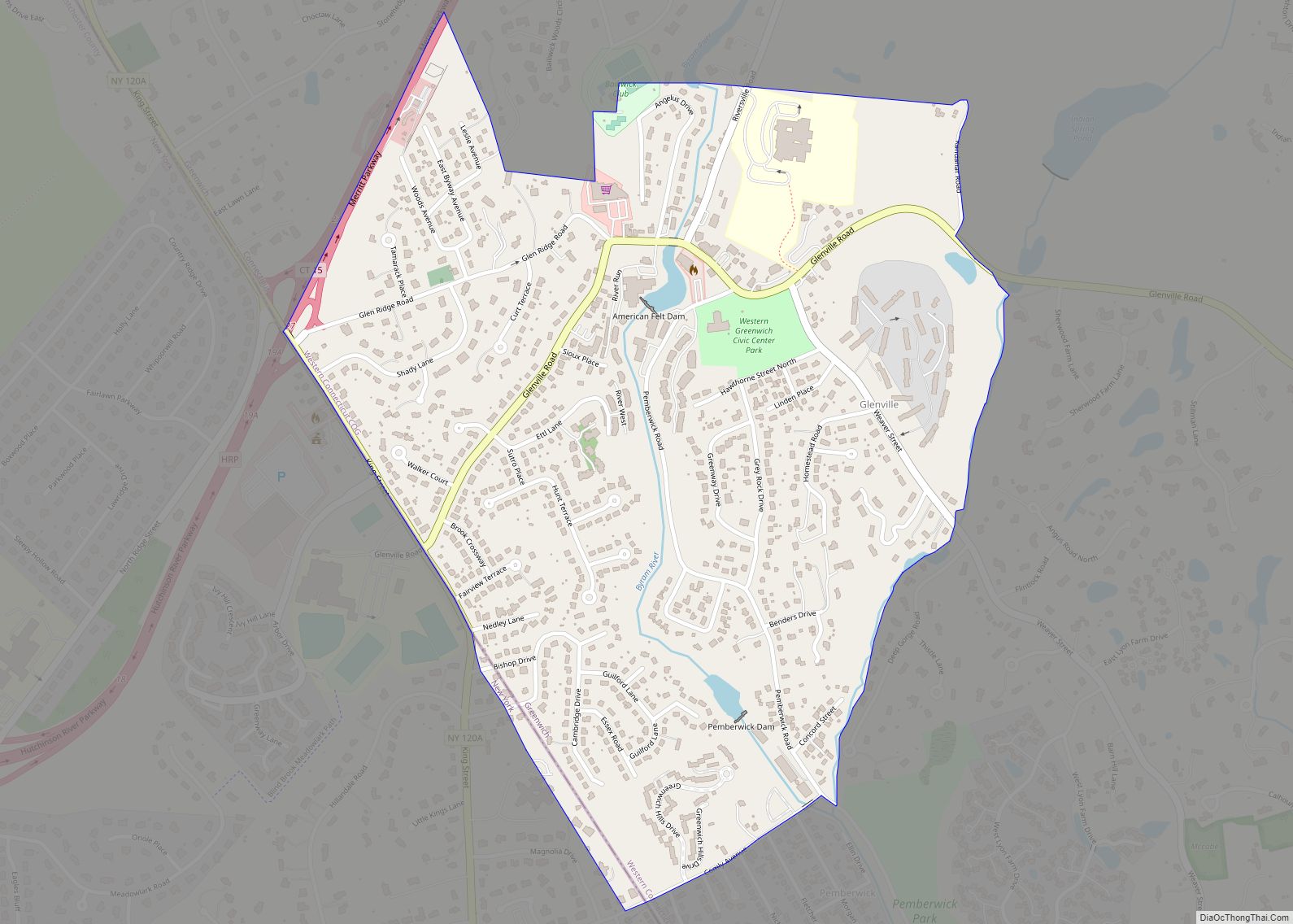Danbury is a city in Fairfield County, Connecticut, United States, located approximately 50 miles (80 km) northeast of New York City. Danbury’s population as of 2020 was 86,518. It is the third largest city in Western Connecticut, and the seventh largest city in Connecticut.
Danbury is nicknamed the “Hat City” because it was the center of the American hat industry for a period in the nineteenth and early twentieth centuries. The mineral danburite is named for Danbury while the city itself is named for Danbury in Essex, England.
Danbury is home to Danbury Hospital, Western Connecticut State University, Danbury Fair Mall and Danbury Municipal Airport. In November 2015, USA Today ranked Danbury as the second best city to live in the United States. In April 2021, WalletHub ranked Danbury as the 10th most diverse city in the United States, the most diverse city in New England, and the third most diverse city in the New York metropolitan area (behind Jersey City and New York City). The ranking considers socioeconomic, cultural, economic, household, and religious diversity.
| Name: | Danbury city |
|---|---|
| LSAD Code: | 25 |
| LSAD Description: | city (suffix) |
| State: | Connecticut |
| County: | Fairfield County |
| Elevation: | 397 ft (121 m) |
| Land Area: | 41.95 sq mi (108.64 km²) |
| Water Area: | 2.24 sq mi (5.81 km²) |
| Population Density: | 2,062.4/sq mi (779.56/km²) |
| Area code: | 203/475 |
| FIPS code: | 0918430 |
| GNISfeature ID: | 206580 |
| Website: | www.danbury-ct.gov |
Online Interactive Map
Click on ![]() to view map in "full screen" mode.
to view map in "full screen" mode.
Danbury location map. Where is Danbury city?
History
Danbury was settled by colonists in 1685, when eight families moved from what are now Norwalk and Stamford, Connecticut. The Danbury area was then called Pahquioque by its namesake, the Algonquian-speaking Pahquioque Native Americans (they are believed to have been a band of the Paugusset people), who occupied lands along the Still River. Bands were often identified by such geographic designation but they were associated with the larger nation by culture and language).
One of the original settlers in Danbury was Samuel Benedict, who bought land from the Paquioque in 1685, along with his brother James Benedict, James Beebe, and Judah Gregory. This area was also called Paquiack (“open plain” or “cleared land”) by the Paquioque. In recognition of the wetlands, the settlers chose the name Swampfield for their town. In October 1687, the general court decreed the name Danbury. The general court appointed a committee to lay out the new town’s boundaries. A survey was made in 1693, and a formal town patent was granted in 1702.
During the Revolutionary War, Danbury was an important military supply depot for the Continental Army. Sybil Ludington, 16-year-old daughter of American Colonel Henry Ludington, is said to have made a 40-mile ride in the early hours of the night on April 26, 1777, to warn the people of Danbury and her father’s forces in Putnam County, New York, of the approach of British regulars, helping them muster in defense; these accounts, originating from the Ludington family, are questioned by modern scholars.
During the following day on April 26, 1777, the British, under Major General William Tryon, burned and sacked Danbury, but fatalities were limited due to Ludington’s warning. The central motto on the seal of the City of Danbury is Restituimus, (Latin for “We have restored”), a reference to the destruction caused by the Loyalist army troops. The American General David Wooster was mortally wounded at the Battle of Ridgefield by the British forces which had raided Danbury, but at the beginning of the battle, the Americans succeeded in driving the British forces down to Long Island Sound. Wooster is buried in Danbury’s Wooster Cemetery; the private Wooster School in Danbury also was named in his honor.
In 1802, President Thomas Jefferson wrote a letter to the Danbury Baptist Association, a group expressing fear of persecution by the Congregationalists of that town, in which he used the expression “Separation of Church and State”. It is the first known instance of the expression in American legal or political writing. The letter is on display at the Unitarian-Universalist Congregation of Danbury.
The first Danbury Fair was held in 1821. In 1869, it became a yearly event; the last edition was in 1981. The fairgrounds were cleared to make room for the Danbury Fair Mall, which opened in autumn 1986.
In 1835, the Connecticut Legislature granted a rail charter to the Fairfield County Railroad, but construction was delayed because of lack of investment. In 1850, the organization’s plans were scaled back, and renamed the Danbury and Norwalk Railroad. Work moved quickly on the 23 mi (37 km) railroad line. In 1852, the first railroad line in Danbury opened, with two trains making the 75-minute trip to Norwalk.
The central part of Danbury was incorporated as a borough in 1822. The borough was reincorporated as the city of Danbury on April 19, 1889. The city and town were consolidated on January 1, 1965.
The first dam to be built on the river, to collect water for the hat industry, impounded the Kohanza Reservoir. This dam broke on January 31, 1869, under pressure of ice and water. The ensuing flood of icy water killed 11 people within 30 minutes, and caused major damage to homes and farms.
As a busy city, Danbury attracted traveling shows and tours, including Buffalo Bill’s Wild West Show in 1900. It featured young men of the Oglala Sioux nation, who re-enacted events from frontier history. Oglala Sioux Albert Afraid of Hawk died on June 29, 1900, at age 21 in Danbury during the tour. He was buried at Wooster Cemetery. In 2012, employee Robert Young discovered Afraid of Hawk’s remains. The city consulted with Oglala Sioux leaders of the Pine Ridge Indian Reservation and arranged repatriation of the remains to the nation. This meeting occurred in the Health Sciences Library of Danbury Hospital with assistance of the Chaplain. Wrapped in a bison skin, the remains were transported to Manderson, South Dakota, to Saint Mark’s Episcopal Cemetery, for reburial by tribal descendants.
In 1928 local plane pilots bought a 60-acre (24 ha) tract near the Fairgrounds, known as Tucker’s Field, and leased it to the town. This was developed as an airport, which is now Danbury Municipal Airport (ICAO: KDXR).
Connecticut’s largest lake, Candlewood Lake (of which the extreme southern part is in Danbury), was created as a hydroelectric power facility in 1928 by building a dam where Wood Creek and the Rocky River meet near the Housatonic River in New Milford.
During World War II, Danbury’s federal prison was one of many sites used for the incarceration of conscientious objectors. One in six inmates in the United States’ federal prisons was a conscientious objector, and prisons like Danbury found themselves suddenly filled with large numbers of highly educated men skilled in social activism. Due to the activism of inmates within the prison, and local laborers protesting in solidarity with the conscientious objectors, Danbury became one of the nation’s first prisons to desegregate its inmates.
On August 18–19, 1955, the Still River, which normally meandered slowly through downtown Danbury, overflowed its banks when Hurricane Diane hit the area, dropping six inches of rain on the city. This was in addition to the nine inches that fell from Hurricane Connie five days earlier. The water flooded stores, factories and homes along the river from North Street to Beaver Brook, causing $3 million in damages. Stores downtown on White Street between Main and Maple were especially hard hit. On October 13–16, another 12 inches of rain fell on Danbury, causing the worst flooding in the city’s history. This time, the river damaged all bridges across it, effectively cutting the city in half for several days. Flooding was more widespread than in August, and the same downtown areas hit in August were devastated once again. The resulting damage was valued at $6 million, and two people lost their lives. The City determined the river in the downtown area had to be tamed. $4.5 million in federal and state funding were acquired as part of a greater urban renewal project to straighten, deepen, widen, and enclose the river in a concrete channel through the downtown. At the same time, roads were relocated and rebuilt, 123 major buildings were razed and 104 families were relocated. This began various efforts by the City through 1975 towards urban renewal, using another $22 million of federal funding. However, these efforts failed to reinvigorate the central business district.
On February 13, 1970, brothers James and John Pardue detonated time bombs (injuring 26 people) at the police station, Union Savings Bank and in their getaway car to cover their escape from robbing the bank at gunpoint, the culmination of a two-year crime spree that included four bank robberies and five murders.
The flawed primary mirror of the Hubble Space Telescope was ground and polished in Danbury by Perkin-Elmer’s Danbury Optical System unit from 1979 to 1981. It was mistakenly ground to the wrong shape due to the use of a miscalibrated testing device. The mistake was not discovered until after the telescope was in orbit and began to be used. The effects of the flaw were corrected during the telescope’s first servicing mission in 1993.
In the August 1988 issue of Money magazine, Danbury topped the magazine’s list of the best U.S. cities to live in, mostly due to low crime, good schools, and location.
A case that would make national headlines and play out for over four years began on September 19, 2006, when eleven day laborers, who came to be known as the “Danbury 11”, were arrested in Danbury. A sting operation had been set up where day laborers were lured into a van whose driver, a disguised Danbury police officer posing as a contractor, promised them work. The laborers were driven to a parking lot where, if it was determined they were in the US illegally, were arrested by agents of ICE and the Danbury police. Yale University law students represented the men pro bono and filed a civil rights lawsuit against the city on their behalf. On March 8, 2011, it was confirmed a settlement had been reached in the case whereby Danbury agreed to pay the laborers $400,000 (Danbury’s insurance carrier paid the settlement plus legal fees of close to $1,000,000, less a $100,000 deductible). The federal government agreed to pay them $250,000. As part of the settlement, the City did not admit any wrongdoing and there were no changes in the city’s policies or procedures.
Hatmaking in Danbury
In 1780, what is traditionally considered to be the first hat shop in Danbury was established by Zadoc Benedict. (Hatmaking had existed in Danbury before the Revolution.) The Benedict shop had three employees, and they made 18 hats weekly. By 1800, Danbury was producing 20,000 hats annually, more than any other city in the U.S. Due to the fur felt hat coming back into style for men and increasing mechanization in the 1850s, by 1859 hat production in Danbury had risen to 1.5 million annually. By 1887, thirty factories were producing 5 million hats per year. Around this time, fur processing was separated from hat manufacturing when the P. Robinson Fur Cutting Company (1884) on Oil Mill Road and the White Brothers’ factory began operation.
By 1880, workers had unionized, beginning decades of labor unrest. They struggled to achieve conditions that were more fair, going on strike; with management reacting with lockouts. Because of the scale of the industry, labor unrest and struggles over wages affected the economy of the entire town. In 1893, nineteen manufacturers locked out 4000 union hatters. In 1902, the American Federation of Labor union called for a nationwide boycott of Dietrich Loewe, a Danbury non-union hat manufacturer. The manufacturer sued the union under the Sherman Antitrust Act for unlawfully restraining trade. In the 1908 Danbury Hatters’ Case the U.S. Supreme Court ruled that the union was liable for damages. In the 1930s and 1940s, there were a number of violent incidents during several strikes, mostly involving scab workers brought in as strikebreakers.
Beginning in 1892, the industry was revolutionized when the large hat factories began to shift to manufacturing unfinished hat bodies only, and supplying them to smaller hat shops for finishing. While Danbury produced 24% of America’s hats in 1904, the city supplied the industry with 75% of its hat bodies. The turn of the century was the heyday of the hatting industry in Danbury, when it became known as the “Hat City” and the “Hatting Capitol of the World”. Its motto was “Danbury Crowns Them All”.
The use of mercuric nitrate in the felting process poisoned many workers in the hat factories, creating a condition called erethism, also called “mad hatter disease.” The condition, known locally as the “Danbury shakes”, was characterized by slurred speech, tremors, stumbling, and, in extreme cases, hallucinations. The effect of mercury on the workers’ health was first noted in the late 19th century. While workers in the Danbury factories lobbied for controls on mercury in the early 20th century, a government study on the health effects of mercury was not conducted until 1937. The State of Connecticut announced a ban on mercury in hatmaking in 1941.
While Danbury hat factories stopped using mercury in the 1940s, the mercury waste has remained in the Still River and adjacent soils, and has been detected at high levels in the 21st century.
By the 1920s, the hat industry was in decline. By 1923, only six manufacturers were left in Danbury, which increased the pressure on workers. After World War II, returning GIs went hatless, a trend that accelerated through the 1950s, dooming the city’s hat industry. The city’s last major hat factory, owned by Stetson, closed in 1964. The last hat was made in Danbury in 1987 when a small factory owned by Stetson closed.
Historic pictures
Main Street looking east from White Street, 1907
National Hat Factory, about 1912
View of a hat factory, 1911
Danbury station, c. 1910
Revolutionary Sycamore
Danbury Road Map
Danbury city Satellite Map
Geography
According to the United States Census Bureau, Danbury has a total area of 44.3 square miles (115 km), of which 42.1 square miles (109 km) is land and 2.2 square miles (5.7 km), or 4.94%, is water. The city is located in the foothills of the Berkshire Mountains on low-lying land just south of Candlewood Lake (the City includes the southern parts of the lake). It developed along the Still River, which flows generally from west to east through the city before joining the Housatonic River. The city’s terrain includes rolling hills and not-very-tall mountains to the west and northwest called the Western Highland. Ground elevations in the city range from 378 feet to 1,050 feet above sea level.
A geologic fault known as Cameron’s Line runs through Danbury.
Neighboring towns
Pollution
The hatmaking fur-removal process was based on the use of mercury nitrate. The waste caused serious water pollution as the hat manufacturers dumped it into the Still River throughout the late 19th century and into the 1940s. This toxic product flowed into the Housatonic River and Long Island Sound, affecting water quality and various fish and other organisms.
Field studies conducted in the Still River basin in the 21st century have detected the continuing presence of high levels of mercury in the river sediments and nearby soils.
Climate
Danbury has a humid continental climate (Köppen Dfa), with four distinct seasons, resembling Hartford more than coastal Connecticut or New York City. Summers are hot and humid, while winters are cold with significant snowfall. The monthly daily average temperature ranges from 28.0 °F (−2.2 °C) in January to 74.5 °F (23.6 °C) in July; on average, temperatures reaching 90 or 0 °F (32 or −18 °C) occur on 18 and 3.1 days of the year, respectively. The average annual precipitation is approximately 56.04 inches (1,420 mm), which is distributed fairly evenly throughout the year; snow averages 49.3 inches (125 cm) per season, although this total may vary considerably from year to year. Extremes in temperature range from 106 °F (41 °C) on July 22, 1926, and July 15, 1995 (the highest temperature recorded in Connecticut) down to −18 °F (−28 °C) on February 9, 1934.
See also
Map of Connecticut State and its subdivision: Map of other states:- Alabama
- Alaska
- Arizona
- Arkansas
- California
- Colorado
- Connecticut
- Delaware
- District of Columbia
- Florida
- Georgia
- Hawaii
- Idaho
- Illinois
- Indiana
- Iowa
- Kansas
- Kentucky
- Louisiana
- Maine
- Maryland
- Massachusetts
- Michigan
- Minnesota
- Mississippi
- Missouri
- Montana
- Nebraska
- Nevada
- New Hampshire
- New Jersey
- New Mexico
- New York
- North Carolina
- North Dakota
- Ohio
- Oklahoma
- Oregon
- Pennsylvania
- Rhode Island
- South Carolina
- South Dakota
- Tennessee
- Texas
- Utah
- Vermont
- Virginia
- Washington
- West Virginia
- Wisconsin
- Wyoming
